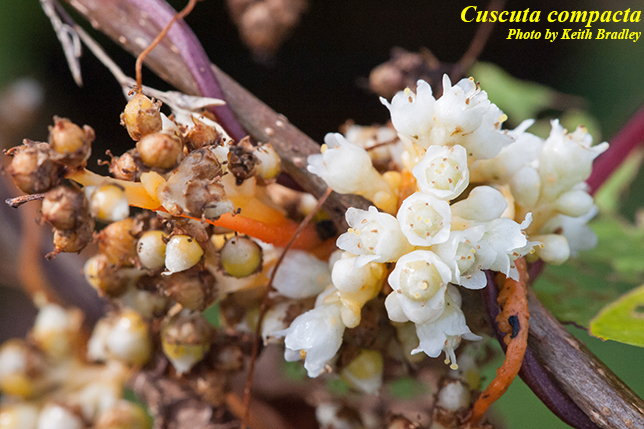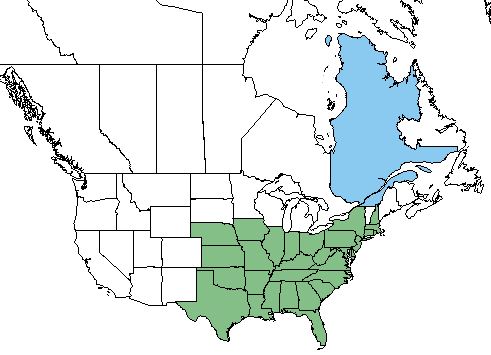Difference between revisions of "Cuscuta compacta"
(→Distribution) |
|||
| Line 26: | Line 26: | ||
==Distribution== | ==Distribution== | ||
| − | + | ''C. compacta'' occurs from Nebraska, south to Texas, eastward to central peninsular Florida, and northward to Illinois, New York, and New Hampshire.<ref name="Weakley 2015"/><ref name="USDA"/> It has also been introduced in Quebec Canada.<ref name="USDA"/> | |
==Ecology== | ==Ecology== | ||
Revision as of 19:29, 24 January 2018
| Cuscuta compacta | |
|---|---|

| |
| Photo by the Atlas of Florida Plants Database | |
| Scientific classification | |
| Kingdom: | Plantae |
| Division: | Magnoliophyta - Flowering plants |
| Class: | Magnoliopsida - Dicots |
| Order: | Solanales |
| Family: | Cuscutaceae |
| Genus: | Cuscuta |
| Species: | C. compacta |
| Binomial name | |
| Cuscuta compacta Juss | |

| |
| Natural range of Cuscuta compacta from USDA NRCS Plants Database. | |
Common Name: compact dodder[1][2]
Contents
Taxonomic Notes
Varieties: C. compacta var. compacta; C. compacta var. efimbriata[1][2]
Description
Distribution
C. compacta occurs from Nebraska, south to Texas, eastward to central peninsular Florida, and northward to Illinois, New York, and New Hampshire.[1][2] It has also been introduced in Quebec Canada.[2]
Ecology
Habitat
C. compacta is found on herbaceous and woody hosts in bottomland forests, stream banks, marshes, swamps, pine savannahs, wet fields, and other wet habitats.[1]
Phenology
In the southern and mid-Atlantic United States, C. compacta flowers from late July through November.[1]